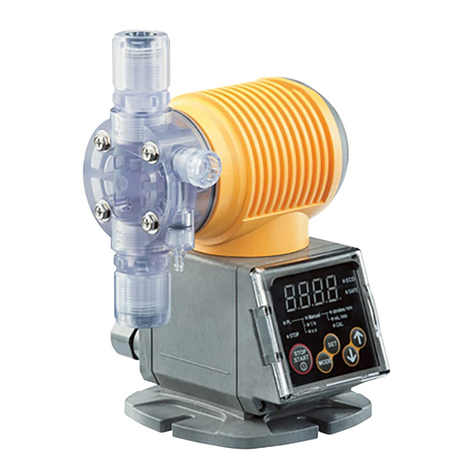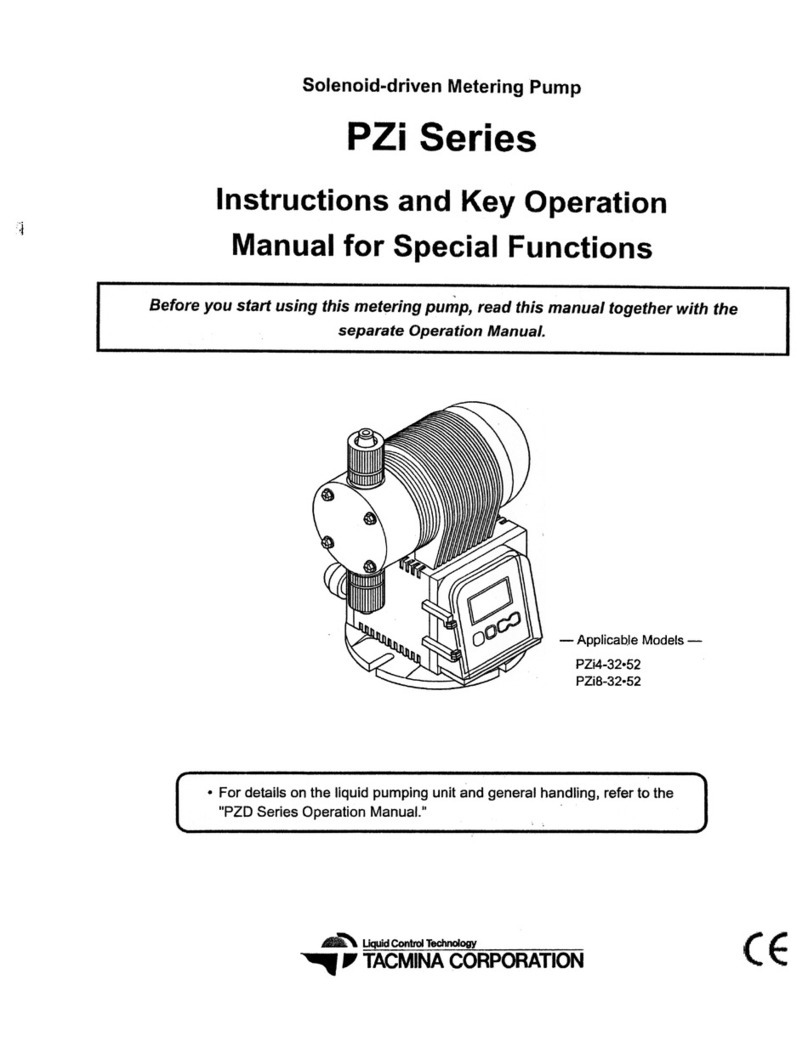1
Operation
When handling chemicals, be sure to use protec-
tive coverings (rubber gloves, face mask, protec-
tive goggles, chemical-resistant work clothes,
etc.) matched to the chemicals you are using.
If you forget to open the discharge-side valve or
if foreign matter clogs the discharge piping, the
pressure in the piping and pump head may
increase beyond the range indicated in the pump
specifications. This may result in the chemicals
leaking or spurting, or in damage to the pump or
1
the piping. Check the valves and other parts
I I
I
before you start pump operation.
I
I
Check the follow~ngpoints.
c
1
Check Location
1
Detailsof Check
I
Remarks
1
Chemical solution Check for insufficient chemicals. Pay special attention to processes or chemicals that
I
tank Replenish if insufficient. are incompatible when air mixes into the chemical.
Piping Check piping for disconnection or damage.
Repair if disconnected or damage.
Valve
1
Make sure that the valve is open. This conditionresults in excessive pressure rise,spraying
(suction/dischargesides) Open if closed, out of chemicals or damage to piping,which is dangerous.
1
Power supply Make sure that the pump is connected to Connection of a non-specifiedmotor may
the specified power supply. cause motor seizure.
Mistakes inthe electrical wiring may cause
1
Electrical wiring
/
Check electrical wiring for mistakes. short circuits or current leakage.
I
Pump head
Joint
1
Check Location
1
Details of Check
Check for chemical leakage from the hole
at the bottom of the spacer ring on the rear
of the pump head.
Remarks
Check for chemical leakage.
A
probable cause of chemical leakage is
a damaged diaphragm.
Inspect the diaphragm.
Tighten the joints if chemicals are leaking from the joints.
If this does not stop chemical leakage,inspect the O-rings
at each section.
/
When using the pump for the first time
'I
Dischargeside
Check
the
Of
the
pressure
gage
pressure on the pump discharge side.
If erroneous numericalvalues are indicated,
probable causesare cloggedpipingor blockedvalves.
1
example, due to tank replacement
1
,
Inspectthe piping.
1
When resuming operation after the pump is shut
down for an extended period
When gas lock is occurring on the pump
When the chemical solution tank is empty, for
When using the pump for the first time
Adjusting the DischargeVolume
When changing the discharge volume
Releasing Air (page
8)
/
When shutting down operation for an extended
1
period
Shutting Down Operation for an
When resuming operation after the pump is shut
Extended Period
down for an extended period
(page
9)































